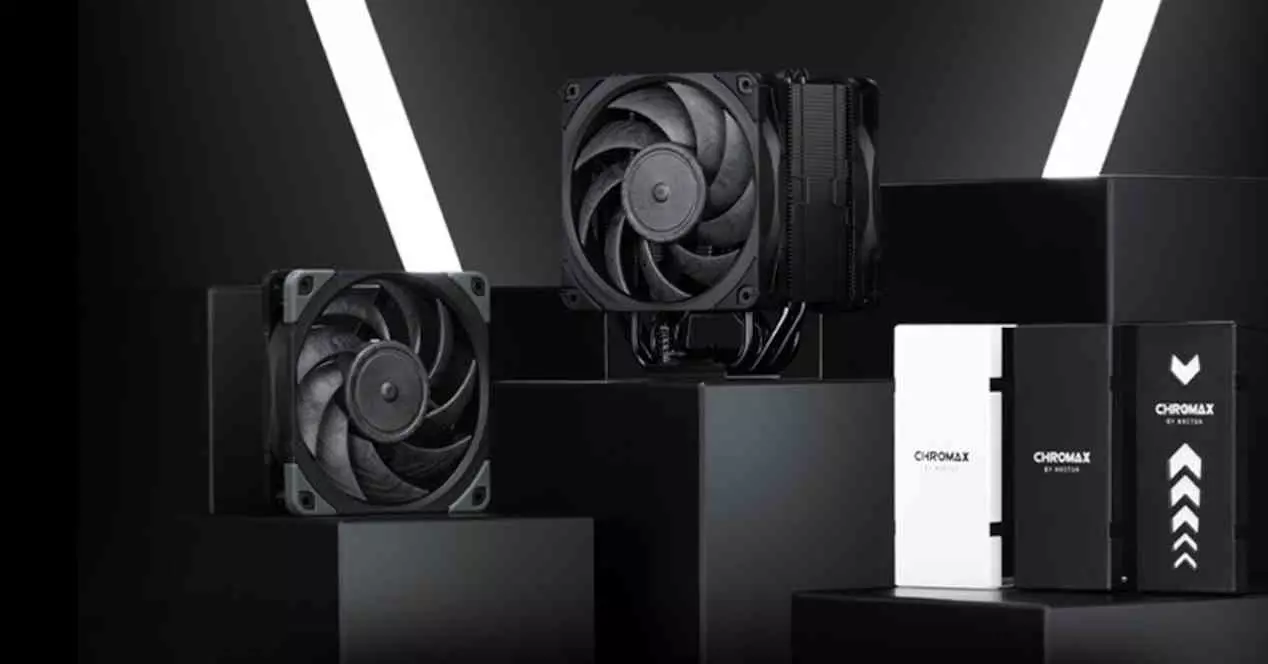
Of course, we are talking about Nintendo and that means that they launched a multitude of accessories to take advantage of this ability. For example, and as you can see in the image above, we have a support for controllers so that they work like a traditional controller, but each Joy-con can also be used individually to be able to have 2 controllers for 2 players. In the same way, we have other accessories such as steering wheels.
Despite its small size, each Joy-con is an individual controller that even has vibration. In fact, the right Joy-con has an infrared movement camera capable of detecting shapes, movements and distance of the objects it detects, for example to recognize the hands of the players when playing rock, paper, scissors.
A strap is also included (so that the Joy-con does not slip out of our hands) anchored to a rail that adds SL and SR buttons to each of the controls and that are more comfortable to use.
As for the dock, an accessory included in the original console, it has a large slot in which to insert the console and connect directly. On the back it includes the power adapter, a USB port and the HDMI port to connect the console to the television, while on the front it has a power indicator and two USB ports on the side (to connect accessories).


Of course, we still have to see the console, which, as you will be able to see in the sketches that we are going to put below, comes “naked”, that is, without the Joy-con on. It consists of a 6.2-inch capacitive touch screen, with integrated speakers and controls on the top, while on both sides it obviously has the rails to be able to attach both Joy-cons.
Also, something very interesting is that a support has been placed on the back to be able to have the console “standing” and play with the remote controls. It also includes a micro SD card slot.


The console design, despite its modularity, is quite robust and easy to use. Subsequently, Nintendo released the version OLED switch, with a slightly larger OLED screen (7 inches) and more internal storage memory (64 GB compared to 32 GB of the original model). They also released the Switch Litea compact model with a smaller screen and less battery, with the particularity that the Joy-cons are not Joy-cons but rather the controls are integrated into the console and cannot be removed.
But now we are going to see its technical characteristics, which have a crumb.
Technical specifications
| nintendoswitch | Nintendo Switch OLED | Nintendo Switch Lite | |
|---|---|---|---|
| Size | 102 x 239 x 13.9mm (with controllers attached) | 102 x 242 x 13.9mm (with controllers attached) | 91.1 x 208 x 13.9mm |
| Weight | 398 grams (297 grams without the Joy-con) | 420 grams (320 grams without the Joy-con) | 275 grams |
| Screen | 6.2 inch capacitive touch LCD HD resolution (1280 x 720 pixels) |
7 inch OLED capacitive touch HD resolution (1280 x 720 pixels) |
5.5 inch capacitive touch LCD HD resolution (1280 x 720 pixels) |
| CPU/GPU | NVIDIA Tegra SoC | NVIDIA Tegra SoC | NVIDIA Tegra SoC |
| RAM | 4GB LPDDR4 | 4GB LPDDR4 | 4GB LPDDR4 |
| Storage | 32 GB (6.2 GB occupied by the operating system) Expandable via micro SD card |
64 GB (6.2 GB occupied by the operating system) Expandable via micro SD card |
32 GB (6.2 GB occupied by the operating system) Expandable via micro SD card |
| communications | WiFi 802.11 a/b/g/n/ac Bluetooth 4.1 With an adapter, the dock can have RJ-45 connection |
WiFi 802.11 a/b/g/n/ac Bluetooth 4.1 With an adapter, the dock can have RJ-45 connection |
WiFi 802.11 a/b/g/n/ac Bluetooth 4.1 |
| Video output | Console: 1280 x 720 Maximum Resolution (HDMI TV): 1920 x 1080 @ 60 FPS |
Console: 1280 x 720 Maximum Resolution (HDMI TV): 1920 x 1080 @ 60 FPS |
Console: 1280 x 720 |
| Audio output | Stereo Compatible with PCM 5.1 (TV mode) 3.5mm minijack audio output |
Stereo Compatible with PCM 5.1 (TV mode) 3.5mm minijack audio output |
Stereo 3.5mm minijack audio output |
| USB | USB-C for charging or docking | USB-C for charging or docking | USB-C for charging |
| sensors | Accelerometer/gyroscope/brightness sensor | Accelerometer/gyroscope/brightness sensor | Accelerometer/gyroscope |
| Battery | lithium ion Capacity: 4,310mAh Autonomy from 4.5 to 9 hours Charging time: 3.5 hours |
lithium ion Capacity: 4,310mAh Autonomy from 4.5 to 9 hours Charging time: 3.5 hours |
lithium ion Capacity: 3,570mAh Autonomy from 4 to 7 hours Charging time: 3 hours |
| RRP | €299.99 | €359.99 | €229.99 |
As you can see by looking at the comparative specifications table of the three basic Nintendo Switch models, all of them make use of a custom NVIDIA Tegra SoC, of which they have not (officially) given more details than their name: Tegra X1. However, this SoC is known to be based on the 20-nanometer GM20B GPU, which runs at a base speed of 384 MHz and reaches 768 MHz in Boost mode. It has 4 GB of dedicated memory running at 1,600 MHz (3.2 GHz effective) on a 64-bit bus, and the GPU integrates 256 Shader Processors, 16 TMUs, 16 ROPs, and 2 SMMs.
The Switch offers connectivity via WiFi with the particularity that up to eight consoles can connect to the same game using only one cartridge (because you already know that the games work with cartridges) and to connect to the Internet, although it is true that it does not have a browser Internet and this connection is only for connecting to the Nintendo eShop for downloading games and multiplayer games.
It has a 4,310 mAh rechargeable lithium-ion battery in the normal and OLED models, and 3,570 mAh in the Lite model that gives the consoles autonomy that obviously depends on the use we give it, but according to the manufacturer it ranges from 4 to 8 hours depending on the console and the game. They give as an example an original Switch with Zelda: Breath of the Wild, which would have an autonomy of about 4 hours playing non-stop.
The original Switch and the Lite model have 32 GB of internal storage, while in the OLED model this amount has doubled to 64 GB, although part of this storage is occupied by the operating system. Fortunately, it can be expanded with a microSD memory card (microSDHC and microSDXC) of up to 2TB capacity, so this should not be a problem. In this regard, logically Nintendo took advantage of the situation to launch several “official” models, although in this case with lesser capacities.
As for prices, the original Switch costs €299.99, while the OLED model goes up to €359.99. For its part, the Lite model, which is much simpler, has a recommended retail price of €229.99.






